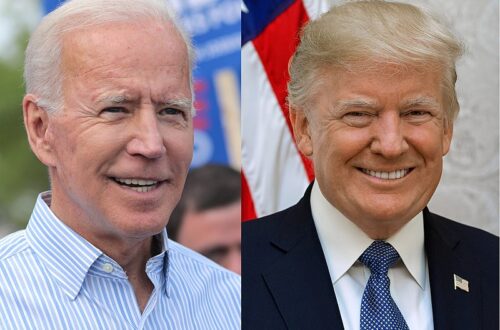In a 60 Minutes interview that aired on Sept. 18, President Joe Biden declared “the pandemic is over.” Yet, the vaccination rate for children aged between six months and five years paints a different picture.
Despite CDC Director Rochelle Walensky’s formal recommendation June 18 that all children in the age range get vaccinated, only 3.2% of children under five nationwide are fully vaccinated. This is considerably lower than the vaccination rate of children aged five to 11, which had a vaccination rate of 23% in the three months after the CDC approved the vaccine for children aged five to 11.

Side-effects of the COVID-19 vaccine in children are very similar to those in adults. These effects include pain at the injection site, swollen lymph nodes, drowsiness, crying and appetite loss.
Even within traditionally blue states that have populations more likely to be vaccinated, the vaccination rate still hovers around only 8%. The rate is only slightly lower in traditionally conservative states, hovering around 2 to 3%.
Florida Gov. Ron DeSantis was in hot water for refusing to pre-order the vaccine for the under-five demographic in June, making Florida the only state not to do so at the time. Even among red states, DeSantis’ decision was an outlier.
A survey performed by the Kaiser Family Foundation, showed that around 43% of parents of children under five would “definitely not” vaccinate their child, citing the perceived lack of research and uneasiness over side effects. Additionally, 53% of parents believe the risk is simply not worth the reward and COVID-19 doesn’t affect their children enough to warrant taking a chance on vaccination. The data available paints a murkier picture.
According to CDC data, there have been 3,228,143 reported COVID cases in children aged up to four, 3.3% of the nearly 97 million total cases. Of the reported cases in the up-to-four age group, 596 have died. In the time span of March 2020 to April 2022, COVID-19 was the fifth highest medical cause of death in children from one to four, based on data from the National Center for Health Statistics.
Nevertheless, most of the dangers behind COVID-19 infection in young children remain yet to be observed.
Long COVID, characterized by the ongoing health problems that linger for months after the virus clears the body, has been increasingly prevalent in COVID-19-affected individuals. Symptoms such as breathing issues, sensory loss, cardiac issues and developmental issues can all affect children after their bout with COVID-19.
“There may be a perception that one needs to be hospitalized to have long COVID and that is not what we found,” said Sarah Messiah, the University of Texas epidemiologist who led a Texas-based study on long COVID.
Messiah’s study found that of those who reported long COVID symptoms, 93% only felt mild to moderate illness at first infection.
Multisystem inflammatory syndrome in children is another COVID-related illness that can develop post-virus. The CDC has recorded 9,073 cases since mid-May 2020, with 74 of these cases resulting in death.
Symptoms of MIS-C include stomach pain, bloodshot eyes, diarrhea, dizziness and vomiting. Although some parents are worried about the side effects of the COVID-19 vaccine, some of the blame for the low vaccination rate can be placed on more logistical issues.
The vast majority of vaccination sites have closed since the initial surge of people getting vaccinated. Schools, which play a large part in vaccine instruction, are of no help for children under five nationwide.
The federal government gave priority to pediatricians and primary care doctors, hoping that the pre-existing trust that parents have in their doctors can persuade them to vaccinate their children. However, 70% of parents with children aged six months to four years old haven’t talked to their primary care providers about the vaccine, according to KFF surveys.
Vaccine providers that some parents may have trusted with their older children have chosen to not stock the doses meant for the under-five age group, only adding another barrier to vaccinating the younger generation.
Regardless of approval given by CDC, or declarations by President Biden, the vaccination rate of children aged six months to five years old still remains far below that of other age groups. While the issue of vaccination has been a politically polarizing topic, lack of trust in the vaccine, limited supply and no schooling have all caused the low vaccination rate in even the most traditionally liberal areas.
Check out other recent articles from the Florida Political Review here.
Featured image: Doctor holds vial of the COVID-19 vaccine. Unmodified photo by Lisa Ferdinando used under a Creative Commons license (https://bit.ly/3yS6t7p).





